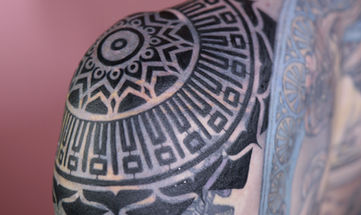WHAT MAKES THIS STYLE SO SPECIAL?
To determine the exact origin of tattoos precisely, recognized archaeologists often lack usable traces and remains from prehistoric times. Tattoos live and die with their owners. Concrete and indisputable evidence is provided only by the findings of tattooed ice mummies such as 'Ötzi' who lived about 5300 years ago. His tattoos show parallel lines and crosses, which were probably placed at medical acupuncture points. The earliest, more complex tattoos, which showed symbolic animal motives, were worn by the mummy of Altai or 'Princess Ukok' who lived about 2500 years ago.
Tribal tattoos are common all over the world. They have always been a cross-cultural expression of affiliation, status, combat performance, geographical location, personality and philosophy. Perhaps the most important basics for today's popular and tattooed tribal styles are the polynesian styles, which evolved from various island nations in the south pacific (maori, hawaiian, marquesan, and samoan) and the kalinga tattoos, with their origins in the mountains of the northern Philippines.
In this context, it is worth mentioning that the oppression and displacement of these ethnic groups, by western colonial forces, and their christian missionary work, at times almost ensured the complete destruction of these cultures. It is therefore even more important to create an awareness for the ancient traditions of these tribes and to appreciate their history with all respect.
Artists and artisans around the world today continue the ancient traditions. Some remain true to the original form and with extensive background knowledge, implement authentic tribal tattoos. Many develop their own interpretations, from which again completely new styles arise (Neotribal). These are still proudly worn by their carriers, even if primarily 'only' because of their decorative and ornamental aesthetics.





















